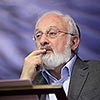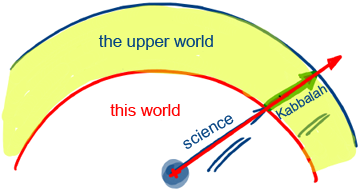About Facts And Myths
 Baal HaSulam, “The Peace,” First Method: Nature
Baal HaSulam, “The Peace,” First Method: Nature
This method is an ancient one. Since they did not find a way and an outlet to bring these two conspicuous opposites closer, they came to assume that the Creator, who created all these, who watches mightily over His reality lest any of it be cancelled, is mindless and senseless.
Hence, although He watches over the existence of reality with wondrous wisdom, yet He Himself is mindless, and does all that senselessly. If there had been any reason and feeling in Him, He would certainly not leave such malfunctions in the provision of reality without pity and compassion for the tormented. For this reason, they named Him “Nature,” meaning a mindless, heartless supervisor. And for that reason, they believe that there is no one to be angry at, to pray to, or to justify oneself to.
This is an ancient concept, approach, although we see it as a new attainment of materialism. The simplest way is to see the world as it is, and this was actually the initial approach of humanity. Religions, beliefs, and philosophical approaches came along much later, when man developed internally, became more complex, and began to invent different myths. In the beginning people simply saw nature and lived in it like animals who also don’t believe in anything. This is how we should actually relate to nature, as it says, “a judge only has what his eyes can see.”
The following approaches stemmed from the disagreement with what happens in nature; people invented them as different excuses, and so they are all false. In fact, we see facts that are independent of our attitude towards them. But man invents different excuses in order to sweeten life or to enjoy false hopes.
A healthy attitude to life is in the scientific approach. We see the effect of unchangeable exact laws everywhere, the activity of systems and the periodicity of natural elements. If I see that that’s the way things are, then it is so, and don’t offer me different lies. I see the truth and any addition to it is individual and cannot be counted on. It is in these additions that beliefs are created, while nature is revealed in facts as it actually is.
The wisdom of Kabbalah continues this approach, telling us about the principles of the perception of reality. We see this world before us, and, except for that it, says that there is a whole area called “the upper world,” which is not imaginary, but which can be studied scientifically. Thus the wisdom of Kabbalah continues conventional science and conducts research beyond the boundaries of conventional science.

[95592]
From the 4th part of the Daily Kabbalah Lesson 12/14/12, “The Peace”
Related Material:
The Science Of Changing Oneself
Are The Exact Sciences Really So Exact?
The Wisdom Of Kabbalah And Philosophy: Who Has The Last Word?







Discussion | Share Feedback | Ask a question